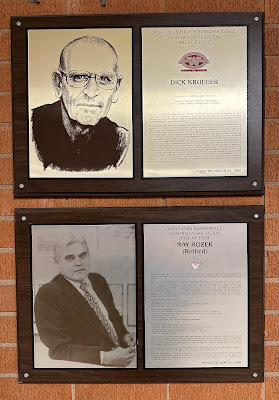Construction of Fort Sumter, named for South Carolina Revolutionary War patriot Thomas Sumter, was begun in 1829. It was one of any number of coastal fortifications built in the years following the War of 1812.
Its five-foot-thick brick walls towered approximately 50 feet above low tide to command the main ship channel. Four sides, 170 to 190 feet long, were designed for three tiers of guns; the gorge, mainly officers' quarters, mounted guns only on the third tier.
Enlisted men's barracks paralleled the gunrooms on the two flanks. A sally port (pictured below) was situated at the center of the gorge, opening onto a wharf.
The fort was designed for an armament of 135 guns and a garrison of 650 men. By December of 1860 the fort was 90 percent complete, unmanned with only 15 cannon mounted at the ready.
 | |
| casements |
Maj. Robert Anderson moved an 85 man garrison to the fort the day after Christmas 1860. In April of 1861, Brig. Gen. Pierre G.T. Beauregard commanded Confederate forces at Charleston. He was one of Anderson's artillery students at West Point in 1837. His job was to evict Federal troops from the fort.
In the very early morning of April 11, Beauregard demanded Anderson surrender. Following a pause of several hours, Confederate positions opened fire. Anderson defended Fort Sumter for 34 hours before surrendering. Miraculously, no one on either side was killed. Five Federal soldiers were injured.
 | ||
The long-awaited civil war had commenced.
By the close of hostilities Fort Sumter has been reduced to rubble from frequent bombardment and bore little resemblance to what stood there in 1861.
In the decade following the war the Army attempted to clear the rubble and return the fort to a working military installation.
 |
| fireplace from what was the officers quarters |
 |
| 15 inch solid shot |
From 1876 to 1897, the fort served mainly as a lighthouse station. Guns rusted in-place and the fort continued to deteriorate. With the run-up to the Spanish American War, Battery Huger was constructed in 1899 including the installation of two long-range 12-inch rifles. Those guns were never fired in anger.
 |
| Battery Huger now houses a gift shop, museum and Park Service offices |
During World War I the rifles were manned and a small garrison maintained for another 20 years. Antiaircraft artillery was installed during WWII. In 1948 the Army transferred ownership to the National Park Service as a National Monument.
 |
| Text failure - no cellular service |















































